
Ranthambore: The Wild Heart of India
Explore Ranthambore: A mesmerizing blend of wildlife, history, and culture in the heart of Rajasthan, India. Ideal for nature lovers and history buffs alike.
Ranthambore, located in the Indian state of Rajasthan, is a renowned destination for wildlife enthusiasts and nature lovers. The city is best known for the Ranthambore National Park, one of the largest and most famous national parks in North India. This park is a former hunting ground of the Maharajas of Jaipur and is now a major wildlife attraction that has drawn the attention of countless tourists from around the world. The park is home to a wide variety of flora and fauna, making it a paradise for photographers and wildlife observers. The most famous residents of the park are the Bengal tigers, which can often be spotted in their natural habitat. Besides tigers, visitors can also see leopards, wild boars, bears, and a diverse range of bird species. The park's picturesque landscape, dotted with ancient ruins, lakes, and dense forests, creates a breathtaking backdrop for wildlife safaris. Apart from the national park, Ranthambore also offers historical and cultural experiences. The Ranthambore Fort, a UNESCO World Heritage Site, stands majestically atop a hill and provides panoramic views of the surrounding area. The fort's rich history and architectural brilliance make it a must-visit attraction. The nearby villages offer a glimpse into the traditional Rajasthani lifestyle, where visitors can interact with locals and experience their warm hospitality.
Local tips in Ranthambore
- Book your safari well in advance, as slots fill up quickly, especially during peak season.
- Early morning and late afternoon safaris are the best times to spot tigers and other wildlife.
- Wear neutral-colored clothing to blend in with the natural surroundings during safaris.
- Carry a good pair of binoculars and a camera with a zoom lens for the best wildlife viewing experience.
- Visit the Ranthambore Fort for stunning views and a dose of history.
- Stay hydrated and carry snacks, especially during long safaris.
- Respect the wildlife and follow the park's rules to ensure a safe and enjoyable visit.
Ranthambore: The Wild Heart of India
Ranthambore, located in the Indian state of Rajasthan, is a renowned destination for wildlife enthusiasts and nature lovers. The city is best known for the Ranthambore National Park, one of the largest and most famous national parks in North India. This park is a former hunting ground of the Maharajas of Jaipur and is now a major wildlife attraction that has drawn the attention of countless tourists from around the world. The park is home to a wide variety of flora and fauna, making it a paradise for photographers and wildlife observers. The most famous residents of the park are the Bengal tigers, which can often be spotted in their natural habitat. Besides tigers, visitors can also see leopards, wild boars, bears, and a diverse range of bird species. The park's picturesque landscape, dotted with ancient ruins, lakes, and dense forests, creates a breathtaking backdrop for wildlife safaris. Apart from the national park, Ranthambore also offers historical and cultural experiences. The Ranthambore Fort, a UNESCO World Heritage Site, stands majestically atop a hill and provides panoramic views of the surrounding area. The fort's rich history and architectural brilliance make it a must-visit attraction. The nearby villages offer a glimpse into the traditional Rajasthani lifestyle, where visitors can interact with locals and experience their warm hospitality.
When is the best time to go to Ranthambore?
Iconic landmarks you can’t miss
Ranthambore Fort
Explore the historic Ranthambore Fort in Rajasthan, a UNESCO World Heritage site, and immerse yourself in breathtaking views and rich culture.

Trinetra Ganesh Temple Ranthambore fort
Explore the spiritual serenity of Trinetra Ganesh Temple, a unique Hindu shrine with breathtaking views and rich cultural heritage in Ranthambore.

Ranthambhore National Resort
Discover the perfect blend of luxury and adventure at Ranthambhore National Resort, your gateway to the stunning wildlife of Rajasthan.

Nahargarh Ranthambhore
Explore the exquisite Nahargarh Ranthambhore, a luxurious resort hotel offering a unique gateway to the wonders of Rajasthan's wildlife and culture.

The Fern Ranthambhore Forest Resort, Sawai Madhopur, Rajasthan
Discover the perfect blend of luxury and nature at The Fern Ranthambhore Forest Resort, your gateway to the wild wonders of Rajasthan.

Anuraga Palace, Luxury Resort & Spa
Experience unparalleled luxury at Anuraga Palace, a serene resort nestled in Rajasthan, perfect for relaxation and wildlife adventures.

The Baagh Ananta Elite, Ranthambore
Experience luxury and nature at The Baagh Ananta Elite, a serene resort hotel in Ranthambore, Rajasthan, perfect for wildlife lovers and cultural enthusiasts.

RANTHAMBORE NATIONAL PARK
Explore the breathtaking wildlife and vibrant landscapes of Ranthambore National Park, a premier destination for wildlife enthusiasts in Rajasthan.

Aman-i-khas
Experience luxury and nature at Aman-i-khas, a premier tented camp near Ranthambore, where adventure meets opulence in Rajasthan.

The Oberoi Vanyavilas Wildlife Resort, Ranthambore
Immerse yourself in luxury and nature at The Oberoi Vanyavilas Wildlife Resort, an exquisite retreat near Ranthambore National Park, Rajasthan.

The Tigress, Ranthambore
Experience luxury and wildlife in harmony at The Tigress, a premier resort hotel near Ranthambore National Park, Rajasthan.

Rajiv Gandhi Regional Museum of Natural History, Sawai Madhopur
Discover the biodiversity of Rajasthan at Rajiv Gandhi Regional Museum of Natural History, a must-visit for nature lovers and curious travelers.

Sultan Bagh Resort by The Sky Imperial, Ranthambore
Discover the beauty of Rajasthan at Sultan Bagh Resort, a luxurious retreat near Ranthambore National Park, perfect for adventure and relaxation.

Amreshwar Mahadev Temple
Discover the divine beauty of Amreshwar Mahadev Temple in Khilchipur, a serene Hindu pilgrimage site surrounded by nature's splendor.

Taj Sawai Ranthambore
Experience unparalleled luxury and immerse yourself in nature at Taj Sawai Ranthambore, a premier resort hotel near Ranthambore National Park.

Unmissable attractions to see
Ranthambore Fort
Discover the captivating blend of history and nature at Ranthambore Fort, a UNESCO World Heritage Site surrounded by stunning wildlife and scenic landscapes.

Ranthambhore National park| TIGER SAFRI
Experience the thrill of wildlife and the majestic beauty of nature at Ranthambhore National Park, home to India's iconic Bengal tigers.

RANTHAMBORE NATIONAL PARK
Discover the breathtaking wildlife and rich heritage of Ranthambore National Park, a premier destination for nature lovers and adventure seekers in Rajasthan.

Rajiv Gandhi Regional Museum of Natural History, Sawai Madhopur
Explore India's rich biodiversity at the Rajiv Gandhi Regional Museum of Natural History in Sawai Madhopur, a captivating natural history museum for all ages.

Sultan Bagh Resort by The Sky Imperial, Ranthambore
Discover the enchanting Sultan Bagh Resort in Ranthambore, where luxury meets nature and adventure awaits at every turn.

Amreshwar Mahadev Temple
Discover the spiritual serenity of Amreshwar Mahadev Temple, a stunning Hindu shrine nestled in the lush landscapes of Khilchipur, Rajasthan.
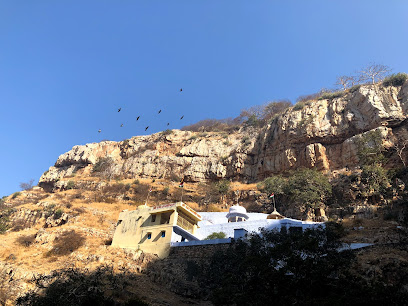
Ganesh Temple
Discover the serene beauty and spiritual essence of Ganesh Temple in Sawai Madhopur, Rajasthan, a must-visit for every traveler seeking cultural experiences.
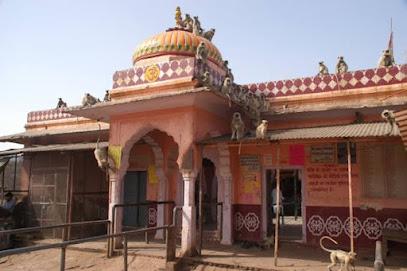
Ganesh Temple
Explore the serene beauty and spiritual significance of the Ganesh Temple in Rajasthan, a must-visit Hindu shrine for all travelers.

Shilpgram
Explore Shilpgram in Sawai Madhopur, a vibrant cultural complex showcasing Rajasthan's rich arts, crafts, and heritage.

National Chambal Gharial Sanctuary Palighat Ranthambhore Sawai Madhopur
Discover the enchanting biodiversity of National Chambal Gharial Sanctuary, a haven for wildlife enthusiasts and nature lovers in Rajasthan.

Patwa Babori
Explore the breathtaking Patwa Babori National Park, a wildlife haven in Rajasthan, where adventure and nature intertwine for an unforgettable experience.

Ranthambhore Park
Discover the beauty of Ranthambore Park, where majestic tigers roam free in a stunning landscape of wildlife and history.

KHANDAR FORT
Discover the majestic Khandar Fort in Rajasthan, a historical fortress surrounded by breathtaking landscapes and rich cultural heritage.

Wild dragon dhaba ranthambhore
Experience authentic Indian cuisine in a vibrant setting at Wild Dragon Dhaba, the perfect dining oasis near Ranthambhore National Park.

32 Pillars Chhatri
Explore the majestic 32 Pillars Chhatri, a historical gem in Ranthambhore, showcasing exquisite Rajasthani architecture and serene landscapes.

Essential places to dine
Kanha's Restaurant
Experience authentic Rajasthani flavors at Kanha's Restaurant in Sawai Madhopur – a culinary delight for every vegetarian foodie.

Goyal's (Food Circle)
Experience the essence of vegetarian dining at Goyal's Food Circle in Sawai Madhopur - where flavor meets family-friendly ambiance.

The Oberoi Vanyavilas Wildlife Resort, Ranthambore
Discover unparalleled luxury amidst nature at The Oberoi Vanyavilas Wildlife Resort in Ranthambore - where wildlife meets elegance.

Sultan Bagh Resort by The Sky Imperial, Ranthambore
Discover unparalleled comfort at Sultan Bagh Resort while exploring Ranthambore's majestic wildlife and stunning landscapes.

Ranthambhore Chopati - Multi-Cuisine Food Court,Game Zone & Safari Booking
Experience the best of Rajasthani cuisine at Ranthambhore Chopati - where dining meets adventure amidst stunning landscapes.
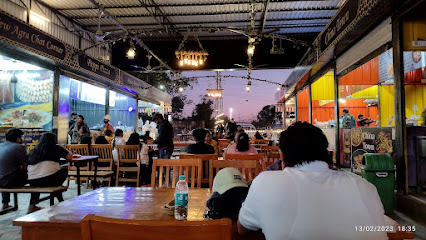
Shree Ram Hotel
Discover the flavors of India at Shree Ram Hotel – where modern cuisine meets traditional hospitality in Sawai Madhopur.

Dosa Corner
Discover the flavors of South India at Dosa Corner in Sawai Madhopur – where delicious dosas meet warm hospitality.

Chulha Restaurant
Discover the rich flavors of authentic vegetarian cuisine at Chulha Restaurant in Sawai Madhopur – where tradition meets taste.

Hotel Saif Ranthambore
Experience delightful dining and comfortable stays at Hotel Saif Ranthambore in scenic Sawai Madhopur.

The food court
Discover delightful breakfast and fast food options at The Food Court in Sawai Madhopur, Rajasthan - A must-visit culinary destination!

Manisha Restaurant pure veg.
Experience authentic Rajasthani vegetarian cuisine at Manisha Restaurant in Sawai Madhopur – where every meal tells a story.

Fateh's Cafe
Experience culinary excellence at Fateh's Cafe in Sawai Madhopur—where local flavors meet fine dining in Rajasthan.

Area T-16
Experience culinary excellence at Area T-16 - where traditional Rajasthani flavors meet modern dining in Sawai Madhopur.

The Earth at Ranthambore
Experience luxury dining and serene accommodations at The Earth at Ranthambore – where nature meets culinary excellence.
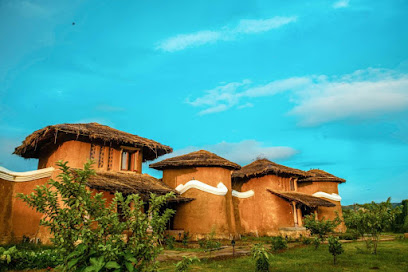
TreeHouse The Pugmark, Ranthambore
Discover luxury and wildlife at TreeHouse The Pugmark in Ranthambore – where adventure meets serenity amidst nature's beauty.

Markets, malls and hidden boutiques
Ranthambore Fort
Discover the rich history and stunning architecture of Ranthambore Fort, a UNESCO World Heritage site set in the heart of Rajasthan's wilderness.

Ranthambore National Park
Discover the breathtaking landscapes and rich wildlife of Ranthambore National Park, a premier destination for nature lovers and adventure seekers in Rajasthan.

Ranthambhore National Resort
Discover the perfect blend of luxury and nature at Ranthambhore National Resort - your gateway to wildlife adventures in Rajasthan.

V-Mart - Sawaimadhopur
Discover the vibrant shopping experience at V-Mart in Sawai Madhopur, where clothing, convenience, and variety come together.

The Oberoi Vanyavilas Wildlife Resort, Ranthambore
Experience the perfect blend of luxury and wildlife at The Oberoi Vanyavilas Wildlife Resort, your gateway to the enchanting Ranthambore National Park.

The Tigress, Ranthambore
Experience luxury and adventure at The Tigress, a premier resort hotel near Ranthambore National Park, perfect for wildlife enthusiasts and relaxation seekers.

Ranthambhore Chopati - Multi-Cuisine Food Court,Game Zone & Safari Booking
Explore an array of culinary delights at Ranthambhore Chopati, a multi-cuisine food court in Sawai Madhopur, perfect for every traveler’s taste.
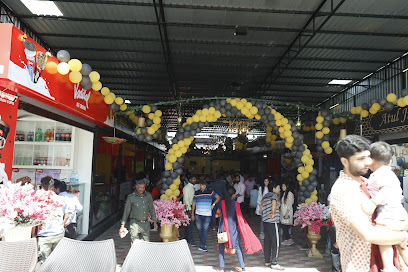
Jungle Retreat Ranthambore
Experience the beauty of nature and wildlife at Jungle Retreat Ranthambore, a serene resort hotel in Rajasthan's lush landscapes.

Ranthambore Tiger Resort
Discover the perfect blend of luxury and adventure at Ranthambore Tiger Resort, your gateway to the wild wonders of Rajasthan.

Fateh's Cafe
Experience the vibrant flavors of Rajasthan at Fateh's Cafe, where local cuisine meets international tastes in a charming setting.

Tribal Women Craft Industries - Women Craft Ranthambhore
Experience the essence of Rajasthan's craftsmanship at Tribal Women Craft Industries, where tradition meets artistry in every handmade piece.

Shilpgram
Immerse yourself in Rajasthani culture at Shilpgram, where art, crafts, and heritage come alive in a vibrant artisan village.

The Earth at Ranthambore
Experience luxury and nature seamlessly blended at The Earth at Ranthambore, your gateway to wildlife adventures and serene relaxation in Rajasthan.

Omak Tiger Seven - A Boutique Hotel in Ranthambhore, Rajasthan
Discover the enchanting Omak Tiger Seven, a boutique hotel in Ranthambhore, where luxury meets nature in the heart of Rajasthan.
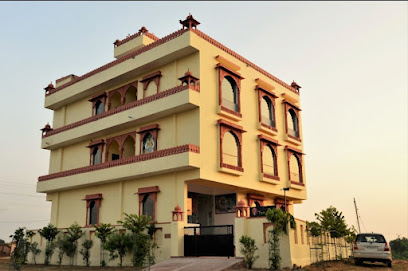
ClarksInn Suites Ranthambore
Experience luxurious comfort and nature's splendor at Clarks Inn Suites Ranthambore, your gateway to the iconic Ranthambore National Park.

Essential bars & hidden hideouts
Kanha's Restaurant
Experience the rich culinary traditions of Rajasthan and South India at Kanha's Restaurant, a must-visit for every food lover in Sawai Madhopur.

The Oberoi Vanyavilas Wildlife Resort, Ranthambore
Discover unparalleled luxury amidst the wildlife of Ranthambore at The Oberoi Vanyavilas Wildlife Resort.

Fateh's Cafe
Experience unforgettable flavors and warm hospitality at Fateh's Cafe in Sawai Madhopur – a must-visit for every traveler.

Noon to Moon
Discover authentic Chinese flavors at Noon to Moon, a delightful restaurant in Sawai Madhopur specializing in non-vegetarian dishes for an unforgettable dining experience.

Sky Lounge
Experience the flavors of Rajasthan at Sky Lounge, where exquisite cuisine meets breathtaking views in Sawai Madhopur.

OYO 24258 Jungle Friend Ranthambore
Experience the beauty of Rajasthan at OYO 24258 Jungle Friend Ranthambore, where comfort meets adventure in the heart of nature.

Ankur Beer Bar
Ankur Beer Bar: A vibrant spot in Sawai Madhopur for drinks and socializing, perfect for unwinding after exploring Rajasthan's beauty.

The Dining Room
Discover the exquisite flavors and elegant ambiance of The Dining Room at Vivanta Sawai Madhopur, a culinary gem in the heart of Rajasthan.

Tiger Trail Restaurant
Savor authentic Rajasthani cuisine at Tiger Trail Restaurant, a culinary gem in Sawai Madhopur, known for its rich flavors and warm hospitality.

Ranthambore Restaurant & Café
Experience the flavors of Rajasthan at Ranthambore Restaurant & Café, a culinary delight in Sawai Madhopur's beautiful landscape.
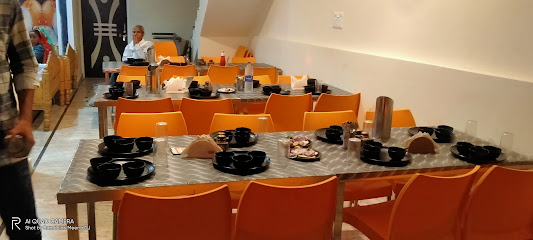
Rajesh Restaurant and Guest House ( Chai Chillum Chapati)
Discover the rich flavors of Rajasthan at Rajesh Restaurant and Guest House, where comfort meets authentic cuisine for an unforgettable dining experience.

Chai sutta bar
Experience the rich flavors of India at Chai Sutta Bar, where authentic chai culture meets a vibrant atmosphere in Sawai Madhopur.

Angeethi Restaurant
Discover the flavors of Rajasthan at Angeethi Restaurant, where traditional cuisine meets modern comfort near Ranthambore Safari.

Jharokha Restaurant - Mount Valley Resort, Ranthambore
Experience authentic Rajasthani cuisine in a serene setting at Jharokha Restaurant, Mount Valley Resort - a must-visit for culinary enthusiasts.

Hindol Bar And Barbecue @ Anuraga Palace
Experience the vibrant atmosphere and delicious barbecue at Hindol Bar And Barbecue in Sawai Madhopur, a culinary haven for travelers.

Local Phrases
-
- Helloनमस्ते
[namaste] - Goodbyeअलविदा
[alvida] - Yesहां
[haan] - Noनहीं
[nahin] - Please/You're welcomeकृपया
[krupaya] - Thank youधन्यवाद
[dhanyavad] - Excuse me/Sorryक्षमा करें
[kshama karein] - How are you?आप कैसे हैं?
[aap kaise hain?] - Fine. And you?ठीक हूँ। आप सुनाओ?
[thik hoon. aap sunao?] - Do you speak English?क्या आप अंग्रेज़ी बोलते हैं?
[kya aap angrezi bolte hain?] - I don't understandमुझे समझ में नहीं आया
[mujhe samajh mein nahi aaya]
- Helloनमस्ते
-
- I'd like to see the menu, pleaseकृपया मेनू दिखाइए
[krupaya menu dikhaiye] - I don't eat meatमैं मांस नहीं खाता
[main maans nahi khaata] - Cheers!चियर्स!
[cheers!] - I would like to pay, pleaseकृपया मैं भुगतान करना चाहूँ
[krupaya main bhugtan karna chaahoon]
- I'd like to see the menu, pleaseकृपया मेनू दिखाइए
-
- Help!बचाओ!
[bachao!] - Go away!जाओ!
[jao!] - Call the Police!पुलिस को बुलाओ!
[police ko bulaao!] - Call a doctor!डॉक्टर को बुलाओ!
[doctor ko bulaao!] - I'm lostमैं खो गया हूँ
[main kho gaya hoon] - I'm illमुझे बीमारी है
[mujhe bimaari hai]
- Help!बचाओ!
-
- I'd like to buy...मैं खरीदना चाहूँगा/गी
[main kharidna chaahunga/chaahungi] - I'm just lookingमैं सिर्फ देख रहा हूँ
[main sirf dekh raha hoon] - How much is it?यह कितने का है?
[yah kitne ka hai?] - That's too expensiveयह बहुत महंगा है
[yah bahut mahanga hai] - Can you lower the price?क्या आप कीमत कम कर सकते हैं?
[kya aap keemat kam kar sakte hain?]
- I'd like to buy...मैं खरीदना चाहूँगा/गी
-
- What time is it?अब कितने बजे हैं?
[ab kitne baje hain?] - It's one o'clockयह एक बजे है
[yah ek baje hai] - Half past (10)दस बजे तकरीबन
[das baje takriban] - Morningसुबह
[subah] - Afternoonदोपहर
[dopahar] - Eveningशाम
[shaam] - Yesterdayकल
[kal] - Todayआज
[aaj] - Tomorrowकल को
[kal ko] - 1एक
[ek] - 2दो
[do] - 3तीन
[teen] - 4चार
[chaar] - 5पांच
[paanch] - 6छह
[chhah] - 7सात
[saat] - 8आठ
[aath] - 9नौ
[nau] - 10दस
[das]
- What time is it?अब कितने बजे हैं?
-
- Where's a/the...?कहाँ है...
[kahan hai...] - What's the address?पता क्या है?
[pata kya hai?] - Can you show me (on the map)?क्या आप मुझे दिखा सकते हैं (नक्शे पर)?
[kya aap mujhe dikha sakte hain (naksha par)?] - When's the next (bus)?अगली (बस) कब है?
[agli (bas) kab hai?] - A ticket (to ....)एक टिकट (.... के लिए)
[ek ticket (.... ke liye)]
- Where's a/the...?कहाँ है...
History of Ranthambore
-
Ranthambore's history dates back to the 10th century when it was part of the Chauhan dynasty. Founded by the Chauhan rulers, the region was strategically important owing to its location in the Aravalli and Vindhya hill ranges. The fort of Ranthambore, a key feature of the region, was constructed during this period and served as a formidable barrier against invasions.
-
Prithviraj Chauhan, one of the most famous rulers of the Chauhan dynasty, had a significant influence on Ranthambore. Under his reign in the late 12th century, the fort was further fortified. His valor and battles, especially against Muhammad Ghori, left a lasting impact on the region's historical narrative.
-
In the early 14th century, Alauddin Khilji, the Sultan of Delhi, marched towards Ranthambore with the aim of capturing it. After a prolonged and fierce siege in 1301, Khilji succeeded in conquering the fort. This event marked the end of the Chauhan dominance in the region and introduced a new era under the Delhi Sultanate.
-
Ranthambore's strategic importance continued into the Mughal period. Emperor Akbar captured the fort in 1558, integrating it into the vast Mughal Empire. The fort served as a key military outpost and was known for its robust architecture and strategically placed vantage points which were used to monitor the surrounding areas.
-
In the 17th century, the fort came under the control of the Rajput Maharajas of Jaipur. The Rajputs played a crucial role in the region, not only in terms of administration but also in the cultural and architectural development of Ranthambore. Their valor, traditions, and patronage of arts left an indelible mark on the region.
-
During the British colonial era, Ranthambore was a part of the princely state of Jaipur. The British used the region primarily for hunting, and it became a favored hunting ground for British officers and Indian royalty alike. The forests of Ranthambore were renowned for their rich wildlife, especially tigers.
-
Post-independence, the Indian government took significant steps to preserve Ranthambore's rich wildlife heritage. In 1955, the region was declared a wildlife sanctuary, and in 1980, it was established as a national park. The park is now part of the Project Tiger initiative, aimed at protecting the Bengal tiger population and conserving the diverse ecosystem.
Ranthambore Essentials
-
Ranthambore is located in the Sawai Madhopur district of Rajasthan, India. The nearest airport is Jaipur International Airport, approximately 180 kilometers away. From Jaipur, you can take a taxi or hire a car to reach Ranthambore, which typically takes around 3 to 4 hours by road. Alternatively, there are direct trains from major cities like Delhi and Mumbai to Sawai Madhopur Railway Station, which is about 11 kilometers from Ranthambore National Park.
-
Within Ranthambore, the primary mode of transportation is by hiring private taxis or jeeps. Many tourists also prefer organized safari tours that include transportation. Auto-rickshaws are available for short trips within the town of Sawai Madhopur. While renting a car can offer more flexibility, keep in mind that local drivers are familiar with the routes and road conditions.
-
The official currency in India is the Indian Rupee (INR). Credit and debit cards are widely accepted in hotels, restaurants, and larger shops in Ranthambore. However, it is advisable to carry some cash for smaller establishments and local markets. ATMs are available in Sawai Madhopur, but it's wise to withdraw sufficient cash before heading to more remote areas.
-
Ranthambore is generally safe for tourists, but it's essential to take standard precautions. Avoid walking alone at night in unfamiliar areas and always keep an eye on your belongings. While there are no specific high-crime areas targeting tourists, it's best to stay vigilant, particularly in crowded places and markets. Additionally, always follow park guidelines and rules during safaris to ensure your safety and that of the wildlife.
-
In case of an emergency, dial 112 for immediate assistance. The nearest hospital is in Sawai Madhopur, which provides medical services. It's recommended to have travel insurance that covers medical emergencies. For minor health issues, there are pharmacies in Sawai Madhopur where you can purchase over-the-counter medications.
-
Fashion: Do dress modestly, particularly when visiting temples and local communities. Avoid wearing revealing clothing. Religion: Do respect local customs and traditions. Remove your shoes before entering temples. Public Transport: Do be respectful to fellow passengers and adhere to local etiquette. Don't eat or drink on public transport. Greetings: Do greet people with a 'Namaste' (a slight bow with palms pressed together). Eating & Drinking: Do try local Rajasthani cuisine and accept food offerings graciously. Don't refuse hospitality, as it is considered impolite. Always use your right hand for eating and serving.
-
To experience Ranthambore like a local, visit the local markets in Sawai Madhopur where you can buy traditional Rajasthani goods and handicrafts. Engage with locals who are often friendly and willing to share stories about the region's history and wildlife. Don't miss visiting the Ranthambore Fort, which offers breathtaking views of the park. For an authentic experience, consider staying in eco-friendly lodges or homestays that support local communities.
Trending Landmark in Ranthambore
-
Ranthambore Fort
-
Trinetra Ganesh Temple Ranthambore fort
-
Ranthambhore National Resort
-
Nahargarh Ranthambhore
-
The Fern Ranthambhore Forest Resort, Sawai Madhopur, Rajasthan
-
Anuraga Palace, Luxury Resort & Spa
-
The Baagh Ananta Elite, Ranthambore
-
RANTHAMBORE NATIONAL PARK
-
Aman-i-khas
-
The Oberoi Vanyavilas Wildlife Resort, Ranthambore
-
The Tigress, Ranthambore
-
Rajiv Gandhi Regional Museum of Natural History, Sawai Madhopur
-
Sultan Bagh Resort by The Sky Imperial, Ranthambore
-
Amreshwar Mahadev Temple
-
Taj Sawai Ranthambore
Nearby Cities to Ranthambore
-
Things To Do in Jaipur
-
Things To Do in Gwalior
-
Things To Do in Agra
-
Things To Do in Pushkar
-
Things To Do in Delhi
-
Things To Do in Bhopal
-
Things To Do in Udaipur
-
Things To Do in Jodhpur
-
Things To Do in Kanpur
-
Things To Do in Lucknow
-
Things To Do in Jabalpur
-
Things To Do in Rishikesh
-
Things To Do in Ahmedabad
-
Things To Do in Vadodara
-
Things To Do in Jaisalmer







